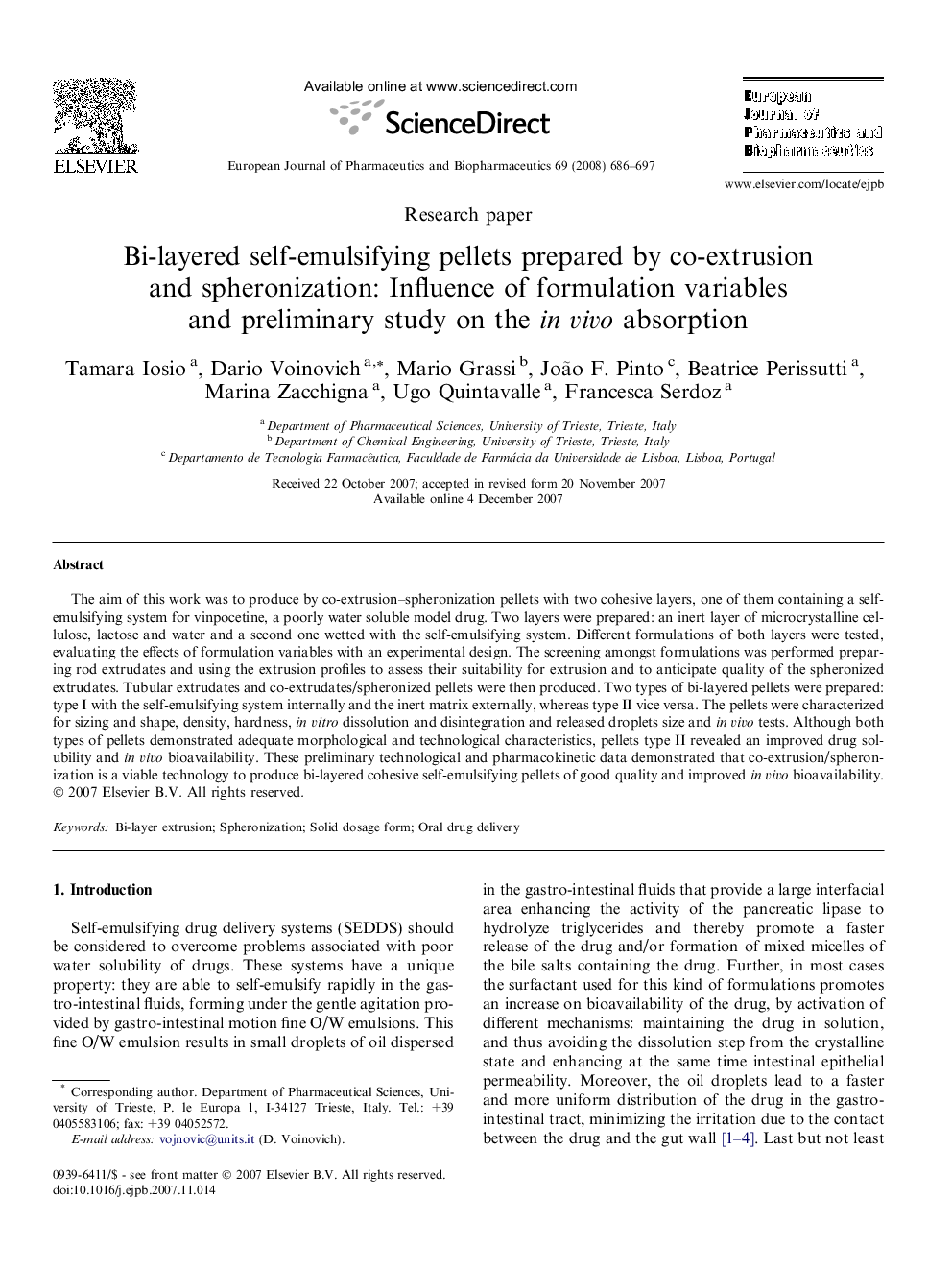| Article ID | Journal | Published Year | Pages | File Type |
|---|---|---|---|---|
| 2084675 | European Journal of Pharmaceutics and Biopharmaceutics | 2008 | 12 Pages |
The aim of this work was to produce by co-extrusion–spheronization pellets with two cohesive layers, one of them containing a self-emulsifying system for vinpocetine, a poorly water soluble model drug. Two layers were prepared: an inert layer of microcrystalline cellulose, lactose and water and a second one wetted with the self-emulsifying system. Different formulations of both layers were tested, evaluating the effects of formulation variables with an experimental design. The screening amongst formulations was performed preparing rod extrudates and using the extrusion profiles to assess their suitability for extrusion and to anticipate quality of the spheronized extrudates. Tubular extrudates and co-extrudates/spheronized pellets were then produced. Two types of bi-layered pellets were prepared: type I with the self-emulsifying system internally and the inert matrix externally, whereas type II vice versa. The pellets were characterized for sizing and shape, density, hardness, in vitro dissolution and disintegration and released droplets size and in vivo tests. Although both types of pellets demonstrated adequate morphological and technological characteristics, pellets type II revealed an improved drug solubility and in vivo bioavailability. These preliminary technological and pharmacokinetic data demonstrated that co-extrusion/spheronization is a viable technology to produce bi-layered cohesive self-emulsifying pellets of good quality and improved in vivo bioavailability.
